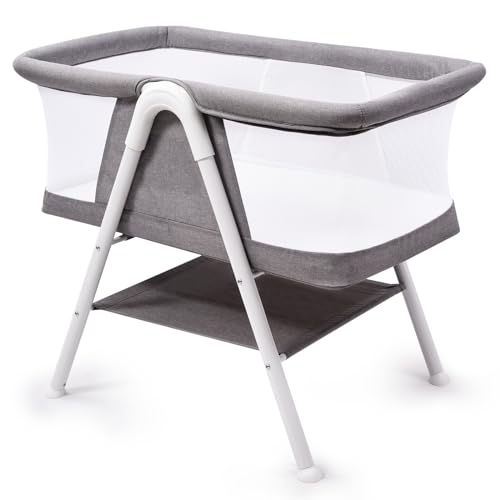8 Tips For Boosting Your Cot Infant Game
Understanding Cot Infants: A Comprehensive Guide for New Parents
Welcoming a newborn into the world is one of life's most wondrous experiences; nevertheless, it is likewise loaded with duties, particularly regarding safety and care. The cot, or crib, is a crucial element in making sure a safe sleeping environment for babies. This article intends to inform moms and dads about the essential aspects of cot babies, clarifying security, types of cots, advised practices, and much more.
What is a Cot Infant?
A “cot infant” refers to an infant that sleeps in a cot, which is a little bed particularly designed to supply a safe sleeping space for infants, normally ages 0 to 2 years. The primary purpose of a cot is to keep infants safe while they sleep, decreasing the threat of falls and guaranteeing they are safe in a contained environment.
Kinds of Cots
When picking the very best cot for an infant, moms and dads have a number of choices to pick from. Below is a detailed table detailing various types of cots readily available in the market:
Type of Cot
Description
Advantages
Disadvantages
Standard Cot
A typical cot made from wood or metal, developed for babies as much as 24 months.
Safe, resilient, adjustable mattress height.
Large, might use up significant space.
Travel Cot
A portable, light-weight cot that can be easily folded.
Easy to transport, perfect for taking a trip.
Less sturdy than basic cots.
Co-Sleeper
A cot that connects to the parents' bed.
Promotes bonding, permits easy gain access to for nursing.
Minimal sleeping space, might not be as secure.
Convertible Crib
A cot that can be changed into a young child bed.
Long-lasting use, versatile as your kid grows.
Greater initial expense, more complicated assembly.
Moses Basket
A little, portable basket for babies, generally utilized in the early months.
Light-weight, relaxing environment for newborns.
Brief life expectancy, less safe as infants grow.
Security Guidelines for Cot Infants
Ensuring the security of a cot infant is critical. The American Academy of Pediatrics (AAP) supplies numerous guidelines that parents ought to stick to when using cots:
- Placement: Place the cot far from windows, drapes, cords, and lamps to avoid any possible risks.
- Mattress Fit: Ensure the mattress fits snugly into the cot frame without any gaps, getting rid of the risk of entrapment.
- Bed linen: Use a firm bed mattress with a fitted sheet. Avoid Cheap Cribs , bumper pads, heavy blankets, and pillows to decrease suffocation risks.
- Sleeping Position: Always place the infant on their back to sleep. This position has actually been linked to a considerable reduction in Sudden Infant Death Syndrome (SIDS).
- Regular Checks: Inspect the cot regularly for loose or damaged parts, and tighten up or replace them as required.
Additional Considerations
In addition to the security standards, there are other elements to consider when taking care of cot babies:
- Monitoring Temperature: Infants can quickly become too hot or too cold. Dressing them in proper layers and guaranteeing the cot remains in a comfy environment is essential.
- Routine: Establishing a constant bedtime regimen can help infants feel safe and secure and promote much better sleep habits.
- Transitioning: As babies grow, parents ought to be prepared for the shift from cot to toddler bed. Signs of readiness include climbing up out of the cot or going beyond the weight limit.
Frequently asked questions
For how long can a baby remain in a cot?
Usually, infants can use a cot till they reach 24 months or when they can climb up out independently. Constantly check Affordable Cots for particular weight limitations and security guidelines.
Is a co-sleeper safe?
Co-sleepers can be safe when appropriately used, provided that they attach firmly to the parents' bed. Always follow security recommendations to avoid any threats connected with sleeping plans.
What type of bed linen should be used in a cot?
A firm mattress with a fitted sheet is suggested. Prevent any additional bed linen, consisting of pillows, blankets, or stuffed animals, to guarantee the infant's security.
How can I guarantee my infant sleeps comfortably?
Monitor the infant's room temperature, gown them appropriately for sleep, and keep a soothing bedtime regimen to promote convenience and a relaxing sleep.
When should I transition my child to a toddler bed?
The majority of moms and dads shift their child to a toddler bed in between the ages of 2 and 3 years, but readiness can differ. Look for signs such as climbing out of the cot or needing more space.
Taking care of a cot infant involves understanding the particular needs of children in their early years. By selecting the proper cot, following security guidelines, and keeping a comfy sleeping environment, parents can make sure a safe and nurturing area for their little ones. As every child is distinct, it is necessary to stay informed and ready, adjusting to the specific needs of the cot infant as they grow. With Best Cots and practices, moms and dads can create a safe sanctuary for their babies, guaranteeing comfort for both parents and infants alike.
